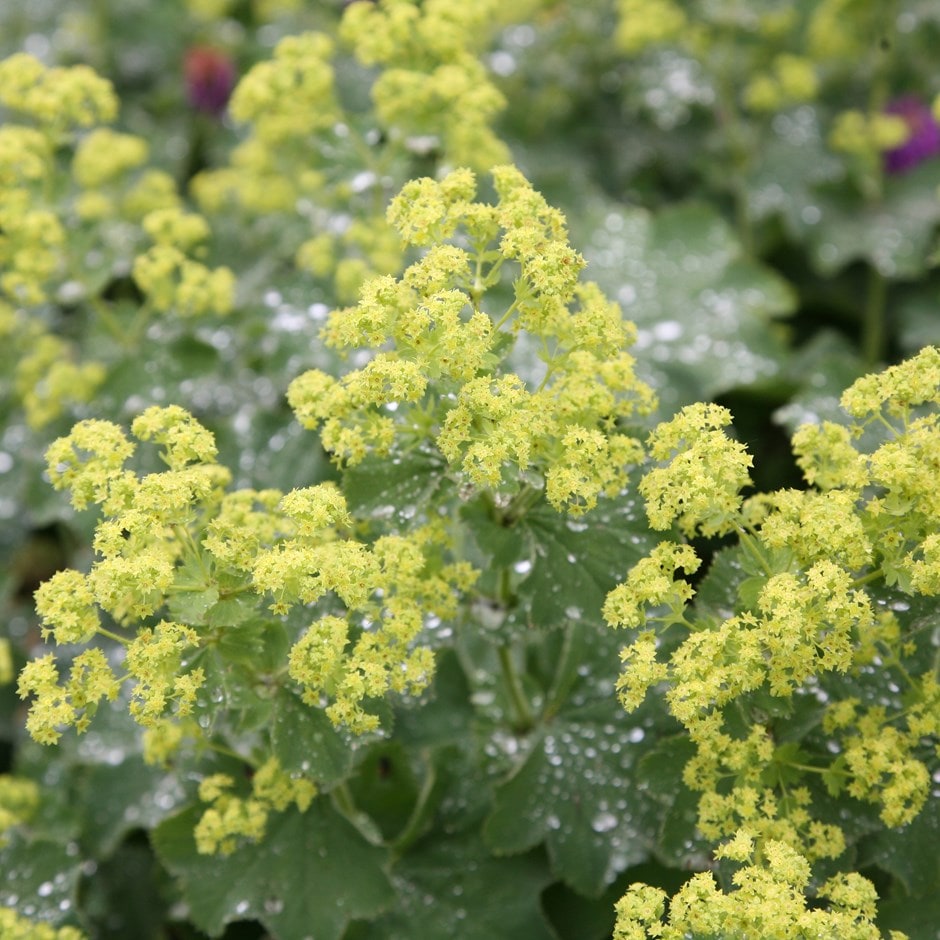Alchemilla mollis
lady's mantle
This perennial dies back to below ground level each year in autumn, then fresh new growth appears again in spring.
- Position: full sun or partial shade
- Soil: Soil: moist, well-drained soil
- Rate of growth: fast
- Flowering period: June to September
- Hardiness: fully hardy
No garden should be without this beautiful and useful perennial. It has attractively scalloped, bright green leaves, which catch water droplets (that look like quicksilver), and from June to September, it produces a frothy haze of tiny, chartreuse yellow flowers. Alchemilla mollis looks wonderful when planted en-masse for weed-smothering groundcover - or when used to line pathways of border edges. Tough and tolerant of a wide range of conditions, once established it can also cope with drought - which makes it the perfect addition to low-maintenance/high impact planting schemes.
When planting, incorporate compost to improve drainage and fertility, spacing plants 30-45cm (12-18in) apart and watering thoroughly. Apply a layer of mulch to retain moisture. Wondering "do you cut back Alchemilla mollis?" Yes, after flowering, cut back the faded flower heads and foliage by half to encourage a second flush of blooms.
While the plant is tolerant of drought once established, watering during particularly dry spells will promote more flowering. Lady’s mantle dies back to the ground in winter but will return with fresh growth in the spring.
This resilient perennial is generally pest-free and disease-resistant. If you wish to control self-seeding in more formal garden settings, deadhead the flowers after blooming. Dividing large clumps every few years in early spring keeps the plant healthy and prevents overcrowding.
While the plant is tolerant of drought once established, watering during particularly dry spells will promote more flowering. Lady’s mantle dies back to the ground in winter but will return with fresh growth in the spring.
This resilient perennial is generally pest-free and disease-resistant. If you wish to control self-seeding in more formal garden settings, deadhead the flowers after blooming. Dividing large clumps every few years in early spring keeps the plant healthy and prevents overcrowding.
In a cold frame or unheated greenhouse, sow the seeds shallowly into trays filled with good quality compost, lightly cover, and keep moist. Germination can take up to three weeks. When the seedlings are large enough to handle, thin out and pot on individually. Once well established, harden off and plant them out in a sunny spot when risk of frost is passed, allowing 30cm between each.

